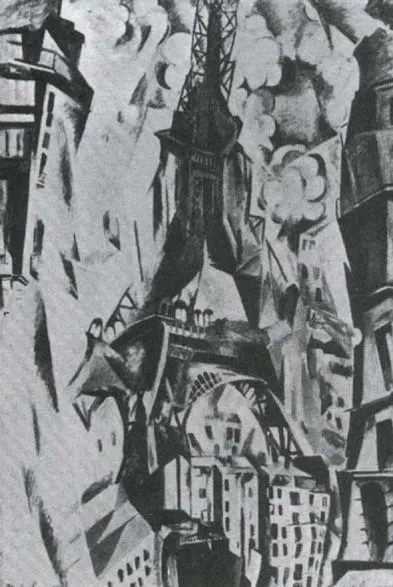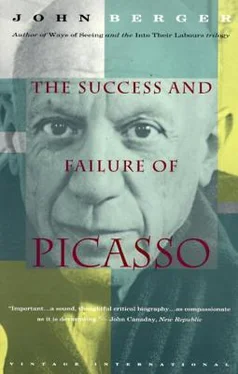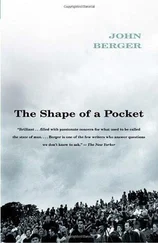By 1900 the actual nature of capitalism had changed. Competition still existed, but it was no longer free and open. The era of monopoly had begun.
In 1912 about one-third of the total national wealth of the United States was owned or controlled by two trusts — Rockefeller and Morgan. (Later the division became less dramatic but no less characteristic of monopoly.) In Germany in 1907 a few large enterprises, representing less than one — hundredth of the total number of German industrial firms, were using more than three quarters of all the steam and electric power available.
The transformation was the result of the scale of production demanded by the new means of production. Steel, electricity, and the new chemical industries were beginning to transform not only the face of the world but also the economic system which had encouraged the discovery of their uses.
Parallel with this development there had been a period of rapid colonial expansion. Between 1884 and 1900 the European powers added one hundred and fifty million subjects and ten million square miles to their empires. By 1900 they had reached the stage where, for the first time, there was nothing left to claim — except by claiming from one another. The whole world was owned.
Today we cannot forget or ignore what all this was leading to. We see the First World War, Nazism, the Second World War, the struggles for independence from imperialism, the millions of dead: starved, burnt or dismembered. We can also see the increasing anonymity of life as the scale grew larger and larger: the anonymity of death by the electric chair (first authorized in 1888), of the skyscraper, of government decisions, of the threat of nuclear war. Kafka, whose formative years were 1900 to 1914, was the prophet of this anonymity. Other artists of the same period — Munch and the German Expressionists — sensed the same thing, but only Kafka understood the full horror of the new bargain: the bargain by which in exchange for sustenance a man forgoes the right to have his existence noticed. No god invented by man has ever had the power to exact such punishment.
Yet this is only one half of the truth: the enormous and most dramatic truth in whose unfolding and realization we, born in the first half of the twentieth century, are participating. Imperialism and monopoly capitalism also represented a promise. By 1900 or 1905 the scale of both our fears and hopes were fixed, though nobody at the time fully realized it.
Monopoly capitalism was the highest, most developed form of economic organization yet achieved by man. It involved planning on an unprecedented scale, and it suggested the possibility of treating the whole world as a single unit. It brought men to the point where they could actually see the means of creating a world of material equality. This point is the opposite pole from where the old anarchist stands looking down at Malaga.
Lenin was the first to see the new developments in this light. In 1916 in Imperialism: The Highest Stage of Capitalism he wrote as follows:
When a big enterprise assumes gigantic proportions, and, on the basis of exact computation of mass data, organizes according to plan the supply of primary raw materials to the extent of two thirds or three quarters of all that is necessary for tens of millions of people; when the raw materials are transported to the most suitable place of production, sometimes hundreds or thousands of miles away, in a systematic and organized manner; when a single centre directs all the successive stages of work right up to the manufacture of numerous varieties of finished articles; when these products are distributed according to a single plan among tens and hundreds of millions of consumers (as in the case of the distribution of oil in America and Germany by the American ‘oil trust’) — then it becomes evident that we have socialization of production.…In spite of themselves, the capitalists are dragged, as it were, into a new social order, a transitional social order from complete free competition to complete socialization.…Production becomes social but appropriation remains private.
As a result of the First World War, there occurred the first successful socialist revolution; after the Second World War a third of the world became socialist. I have no wish to be over-schematic or ever to forget the suffering and sacrifices that the creation of modern socialism has involved, but it is undeniable that today the hopes of the overwhelming majority of the world are contained within some form of modern socialism, and that imperialism and capitalism are so much on the defensive that their apologists have to deny their continued existence. For all this the stage was set between 1900 and 1914.
The Cubists knew nothing of the historic necessities and alternatives that were going to reveal themselves. They were not politically concerned. They were not clear even amongst themselves of the meaning of ‘the future’ in which they believed. Perhaps the one item they could have agreed upon was that in the future their Cubist paintings would not look incongruous if hung in the Louvre. They sensed that a qualitative change was taking place and that the bourgeois — whom they hated for his manners and tastes — would soon be outdated: but they did not know why or how. Their sense of change was largely the result of the impact of new inventions and new material possibilities.
Mass production of clothes, shoes, china, paper, food, bicycles had begun in the eighties and nineties. The whole tempo and scale of city life was being altered. The rate of change was acquiring the speed of a machine — and this could be seen in the streets, the shops, the new newspapers.
The Eiffel Tower, which was to remain the highest structure in the world until after 1918 (it is one thousand feet high) and which could only have been built with modern steel, became a symbol of the new possibilities. It had been built for the 1889 International Exhibition, where there were also electrically illuminated fountains which had persuaded people that electricity was the key to a fantastic future. (It was from the nineties but particularly from 1900 onwards that electrical power began to be applied so as to affect people’s lives. This was largely the result of solving the problems of transmitting power over greater distances by the invention of the alternating current and the transformer.) Apollinaire ended a poem he wrote in 1903 as follows:

33 Robert Delaunay. The Eiffel Tower. 1910
Paris evenings drunk with gin
Aflare with electricity
Trams with green dorsal lights
Turn machine madness into music
Along the sections of their rails.
Cafés puffed out with smoke
Propose their love of gypsies
And their soda syphons with catarrh
And their waiters dressed in loincloths
To you to you whom I have loved so much.
The Paris Exhibition of 1900 was even more dramatic. There were thirty-nine million visitors. (The organizers had actually expected sixty-five million!) There were contributions from everywhere. There was Esperanto — an international language to further the unity and accessibility of the world. There were motor-cars. There was chromium. There was aluminium. There were synthetic textiles. There was wireless.
Читать дальше













